Transiting the Panama Canal has been one of the items on our bucket list for a few years. As I mentioned in a previous post, we had planned to take this trip in March 2020 but, well, Covid.
There are actually two main sets of locks on the Atlantic Ocean side, the Gatun locks and the Agua Clara locks, though they are more commonly referred to as the old and new (or sometimes third set of) locks. We entered the Agua Clara (new) locks from the Caribbean (Atlantic Ocean) side. At the same time another ship entered the Gatun (old) locks.
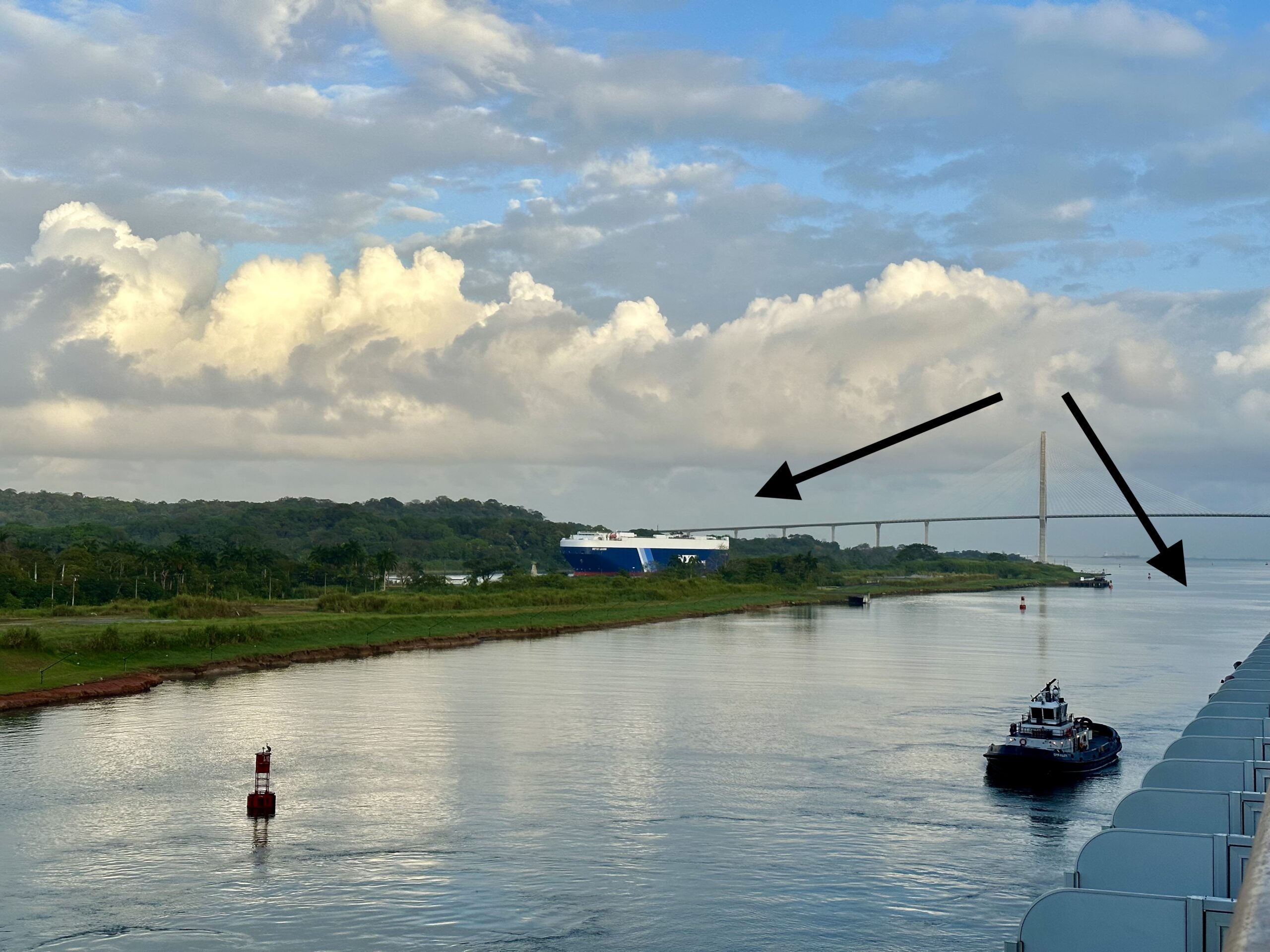
“The Panama Canal…is an artificial 82 km (51 mi) waterway in Panama that connects the Atlantic Ocean with the Pacific Ocean and divides North and South America…The United States took over the project (from France) on May 4, 1904, and opened the canal on August 15, 1914.” – Wikipedia
If you ever take a cruise through the Panama Canal we recommend you splurge for a balcony room. We were able to sit comfortably in our room and watch the process of moving from lock to lock. There are many blogs and YouTube videos out there on which room is best. We were mid-ship, closer to the front, and very happy with our location.
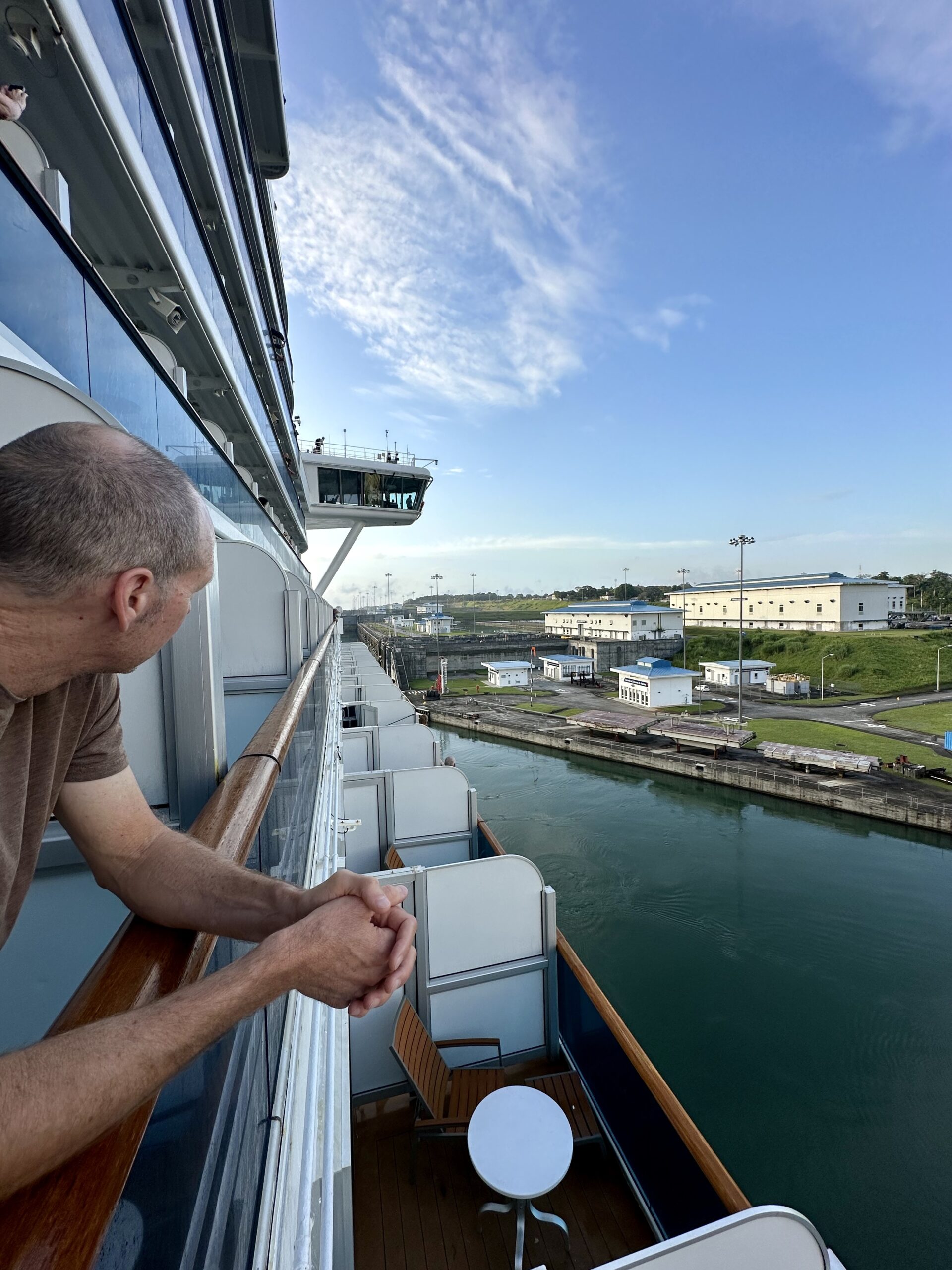
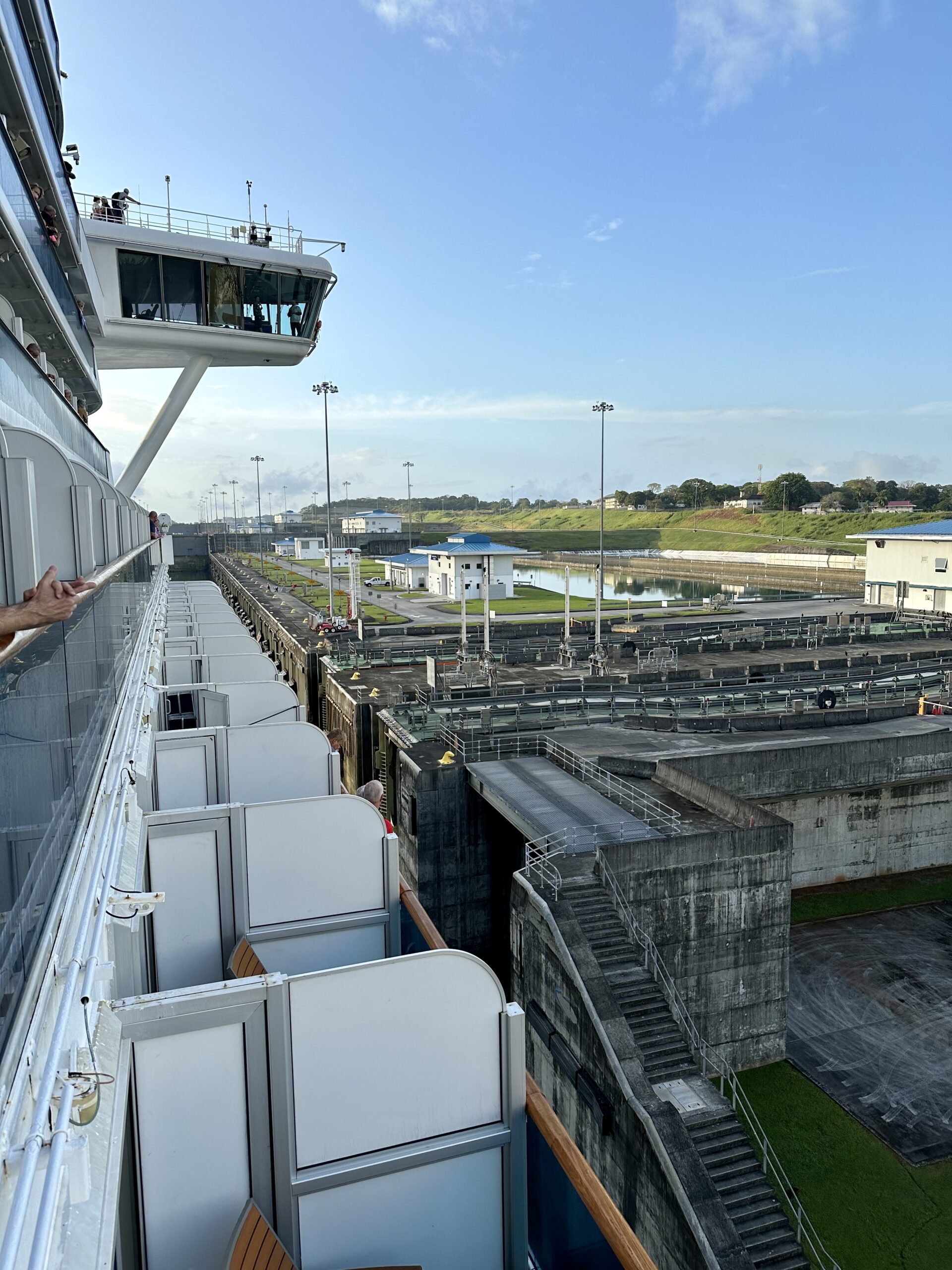
Some interesting facts we learned along the way:
- – The Canal uses a lock system to lift ships up 85 feet (26 meters) above sea level. It resembles giant steps or stairs.
- – It takes 8-10 hours for each ship to make the full transit through the canal from the Atlantic to the Pacific Ocean.
- – The Agua Clara (new) locks opened in 2016. They were built to accomodate today’s larger ships.
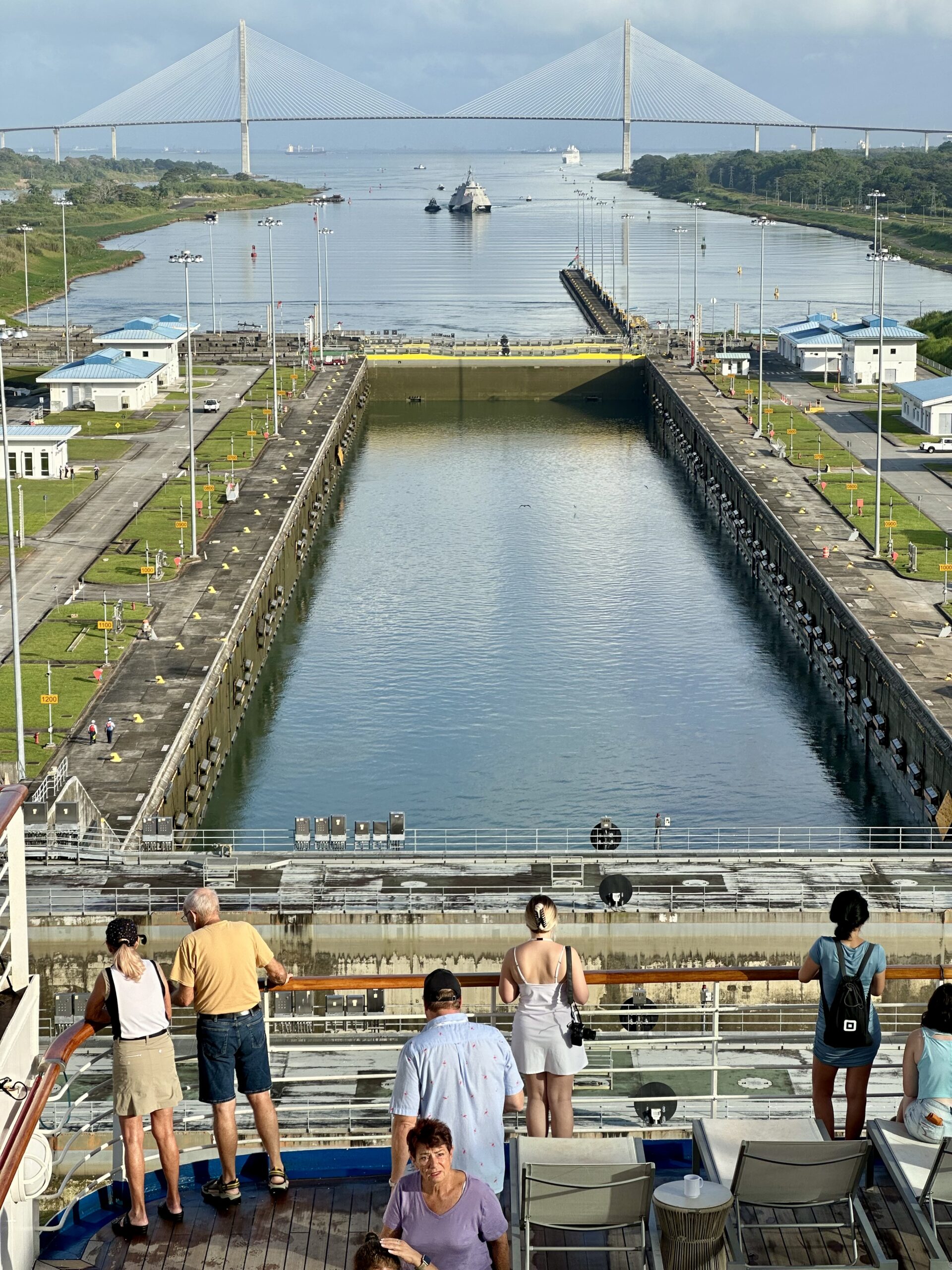
- – About 35-40 ships pass the Panama canal everyday. Over 1 million ships have passed through since it opened in 1914.
- – Each ship pays a toll to pass through the canal. The toll is based on the size and cargo of each ship. Our cruise ship paid about $500,000 USD to pass through.
- – Panamanians earn about 2 billion USD every year, about 40% of their GDP, from tolls to pass through the canal.
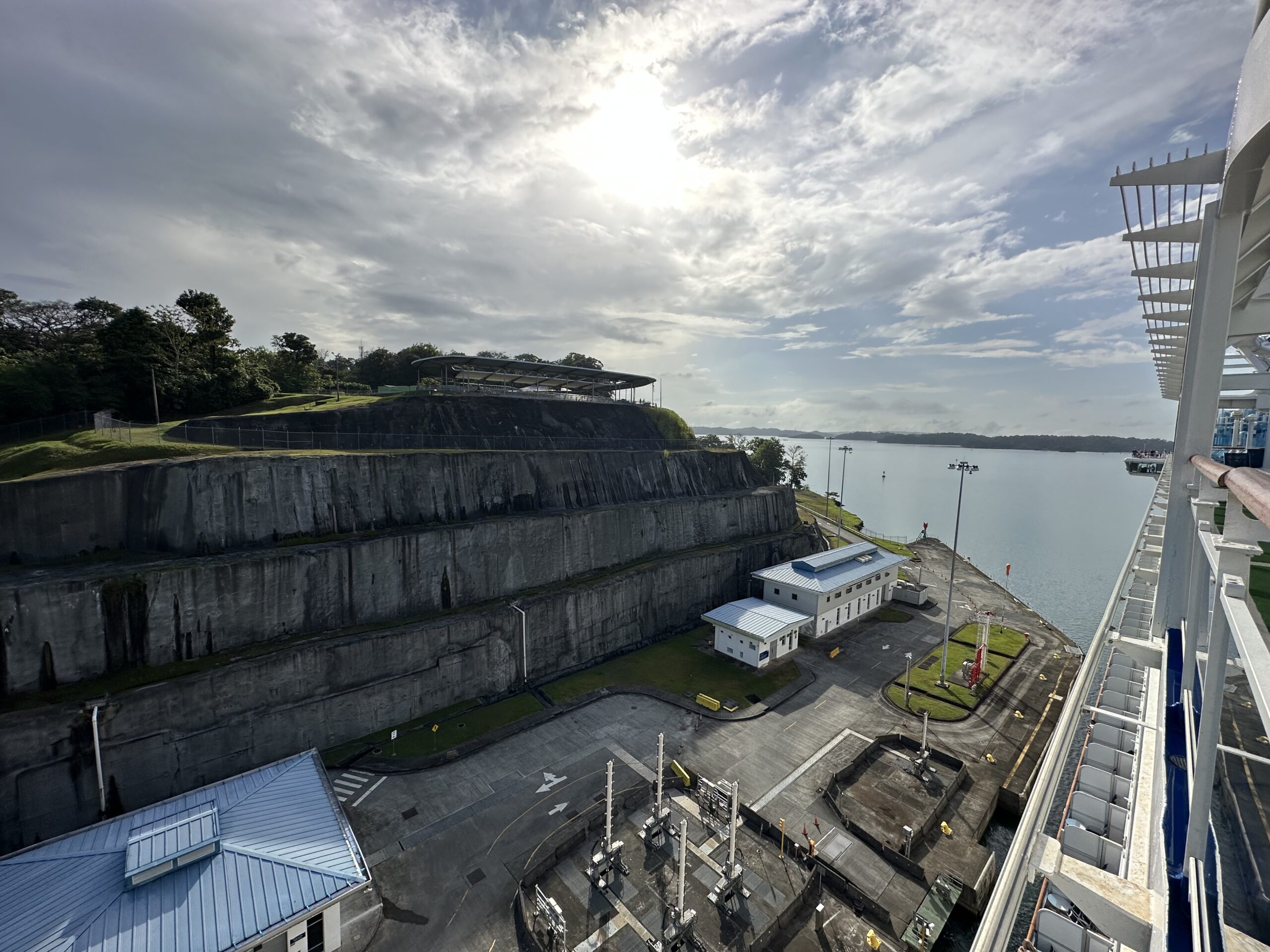
Sadly, about 25,000 people died during the construction of the canal. “Workers had to deal with heat, jungles, swamps – and all the creatures in them, including rats that carried bubonic plague. Plus mosquito-borne diseases like yellow fever and malaria.” (-Avanti World Travel blog) An estimated 22,000 died from disease and accidents while the French were working on the canal.
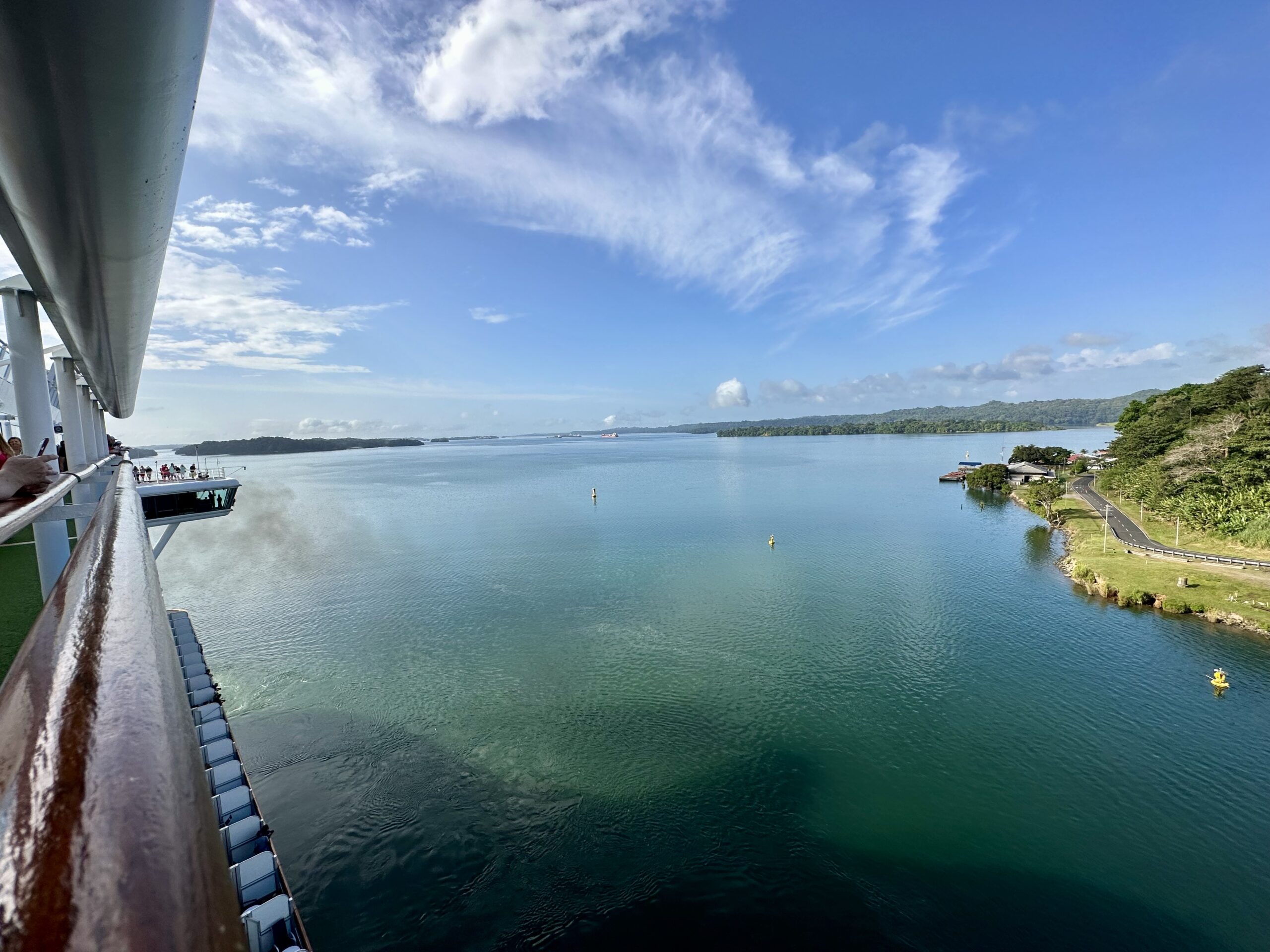
“Created in 1913 by damming the Chagres River, the Gatun Lake is a key part of the Panama Canal, providing the millions of liters of water necessary to operate its locks each time a ship passes through. At the time of formation, Gatun Lake was the largest human-made lake in the world.” – Wikipedia
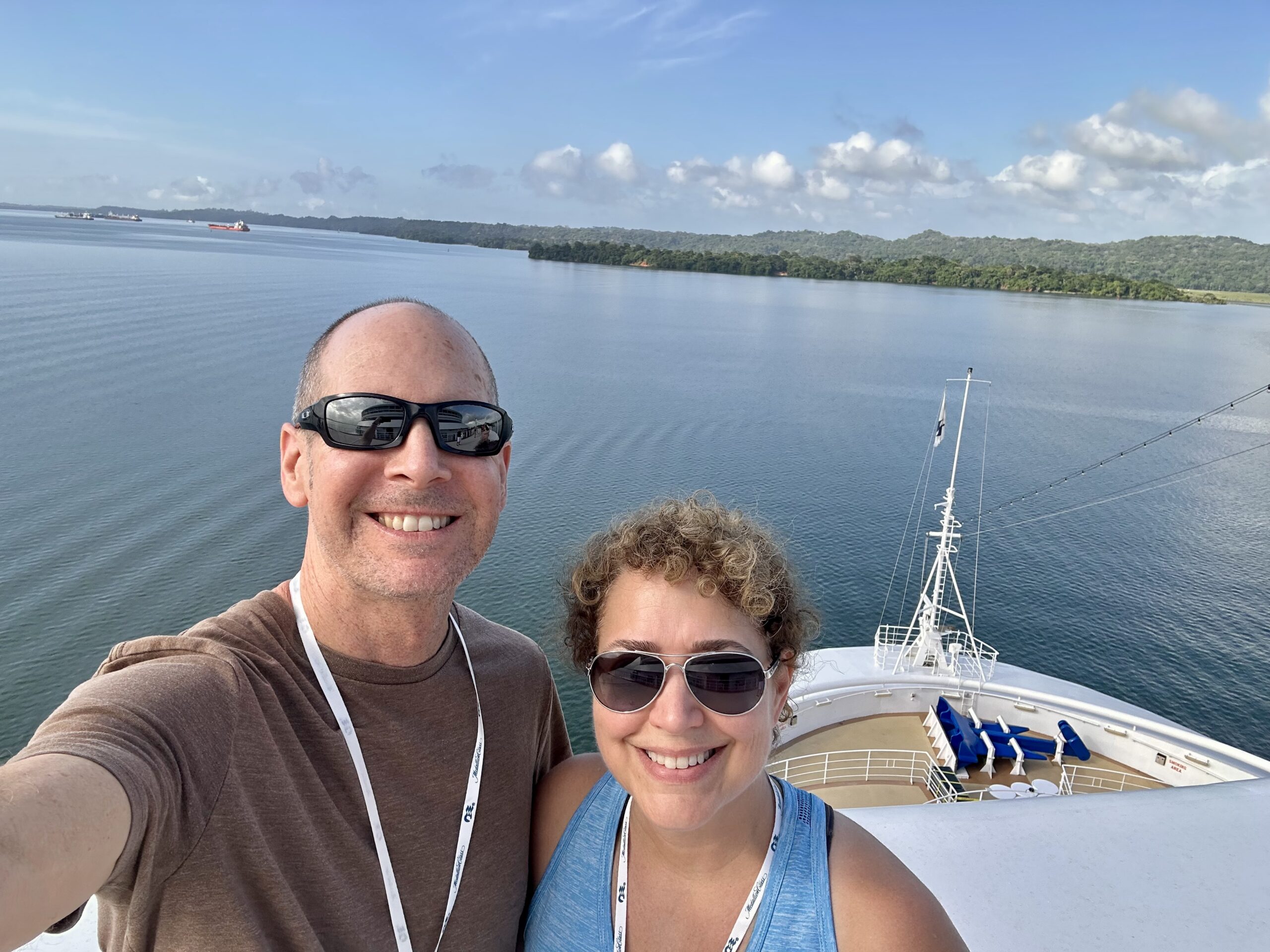
“The largest island on Gatun Lake is Barro Colorado Island. It was established for scientific study when the lake was formed, and is operated by the Smithsonian Institution. Many important scientific and biological discoveries of the tropical animal and plant kingdom originated here.” – Wikipedia
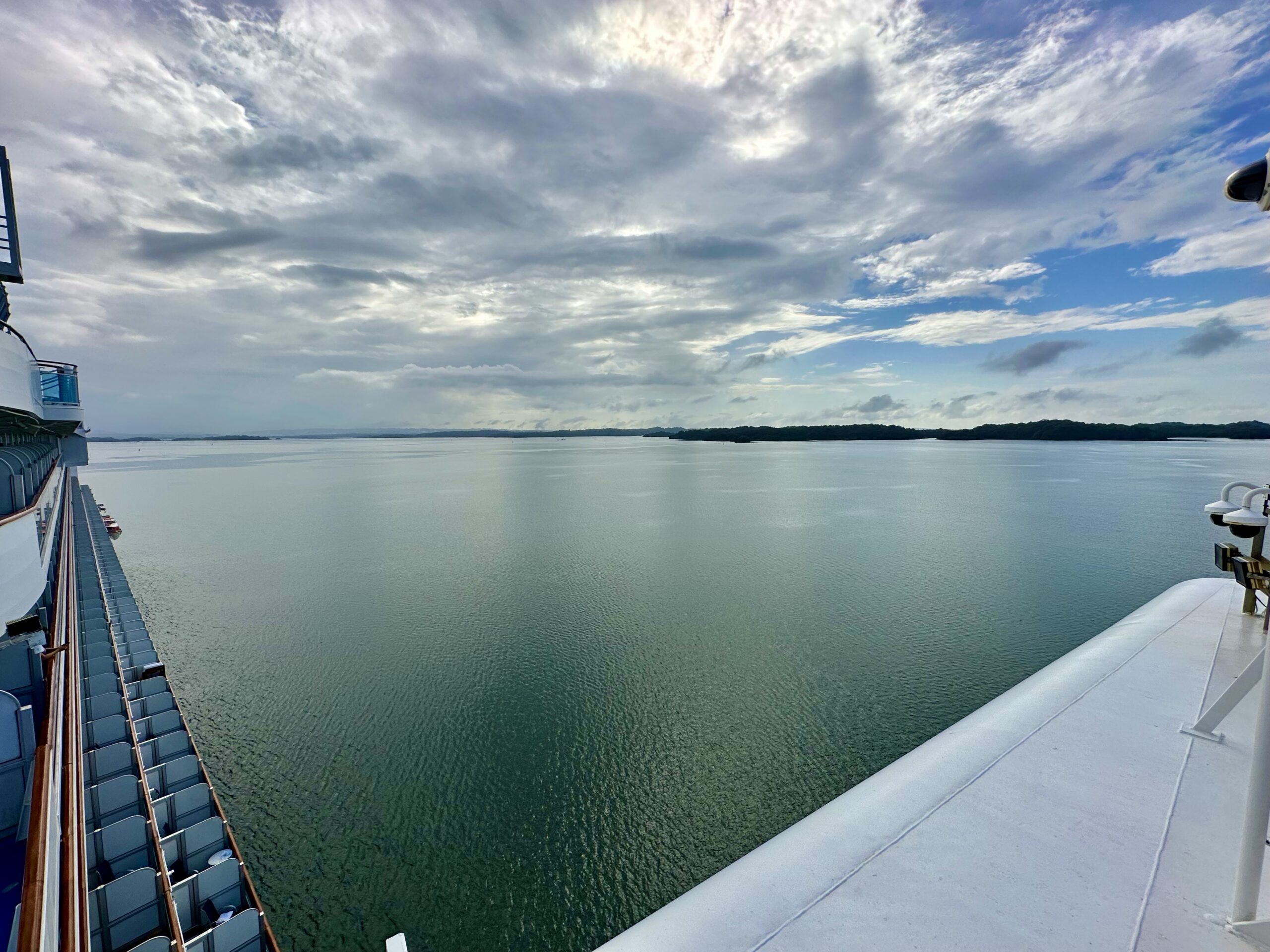
There are no ports large enough to dock a cruise ship in Gatun Lake. All 1,300 passengers departing our cruise ship for shore excursions had to take a tender. Interestingly, all shore excursions take passengers to the cruise port of Colon, Panama, on the other side of the locks. So any passenger who got off the ship in Gatun Lake had to wait for our cruise ship to go back through the locks to meet them on the other side.
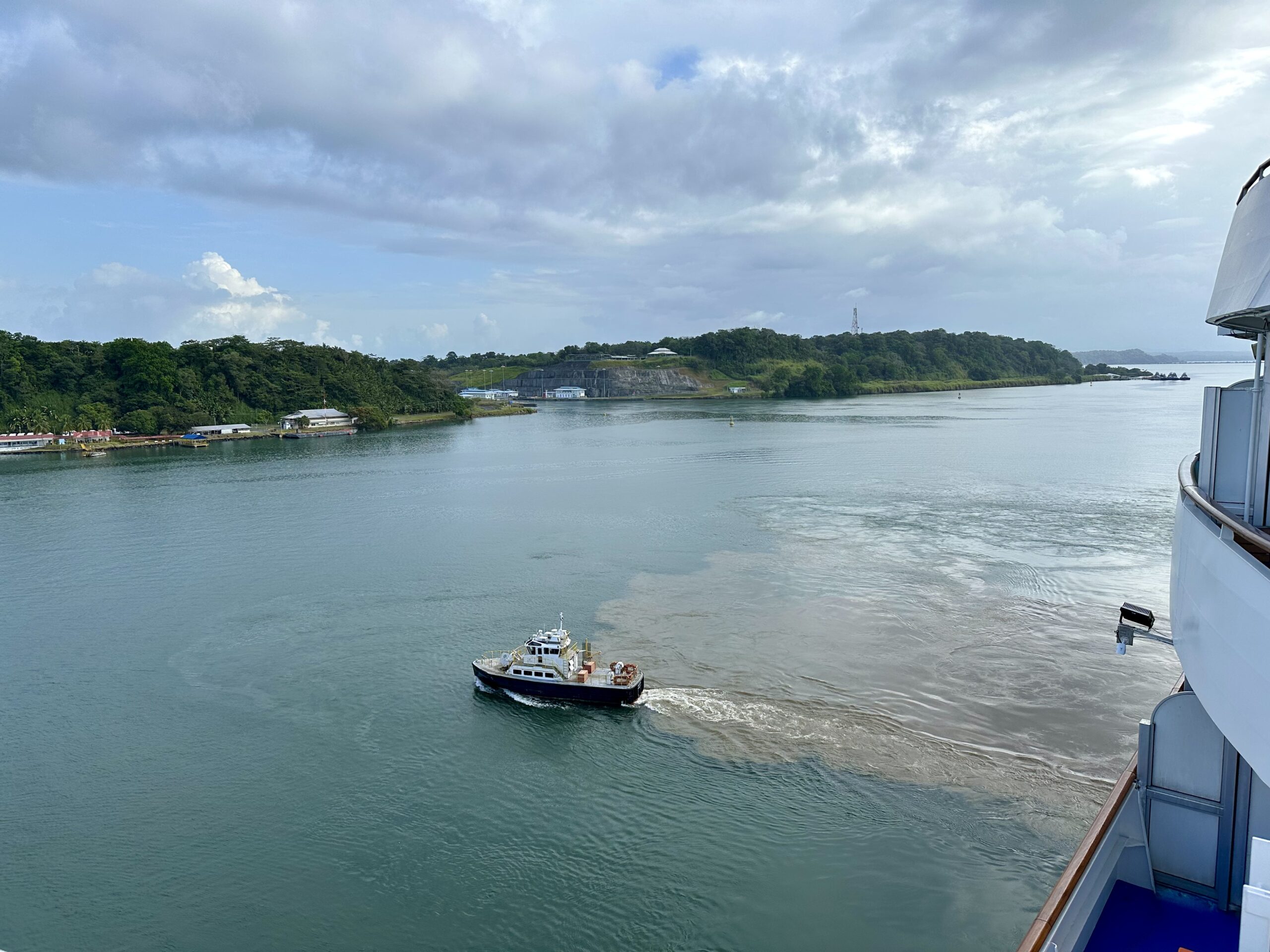
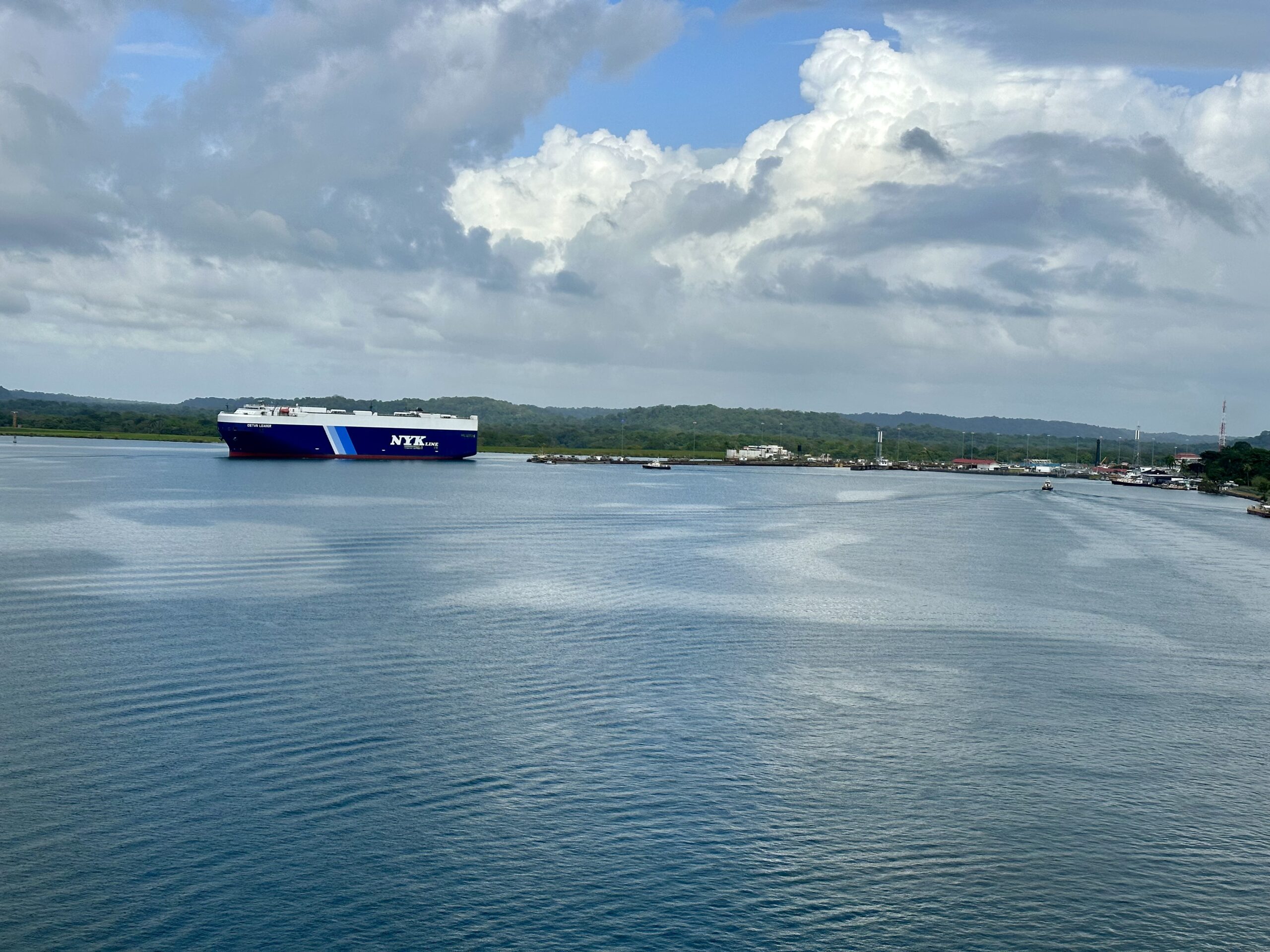
By law, all ships transiting the Panama Canal are required to have a Panama Canal Pilot on board. “The Panama Canal is the only place in the world where the Captain relinquishes control of the vessel to the local pilot.” – Alexei Oduber, GAC Panama Shipping
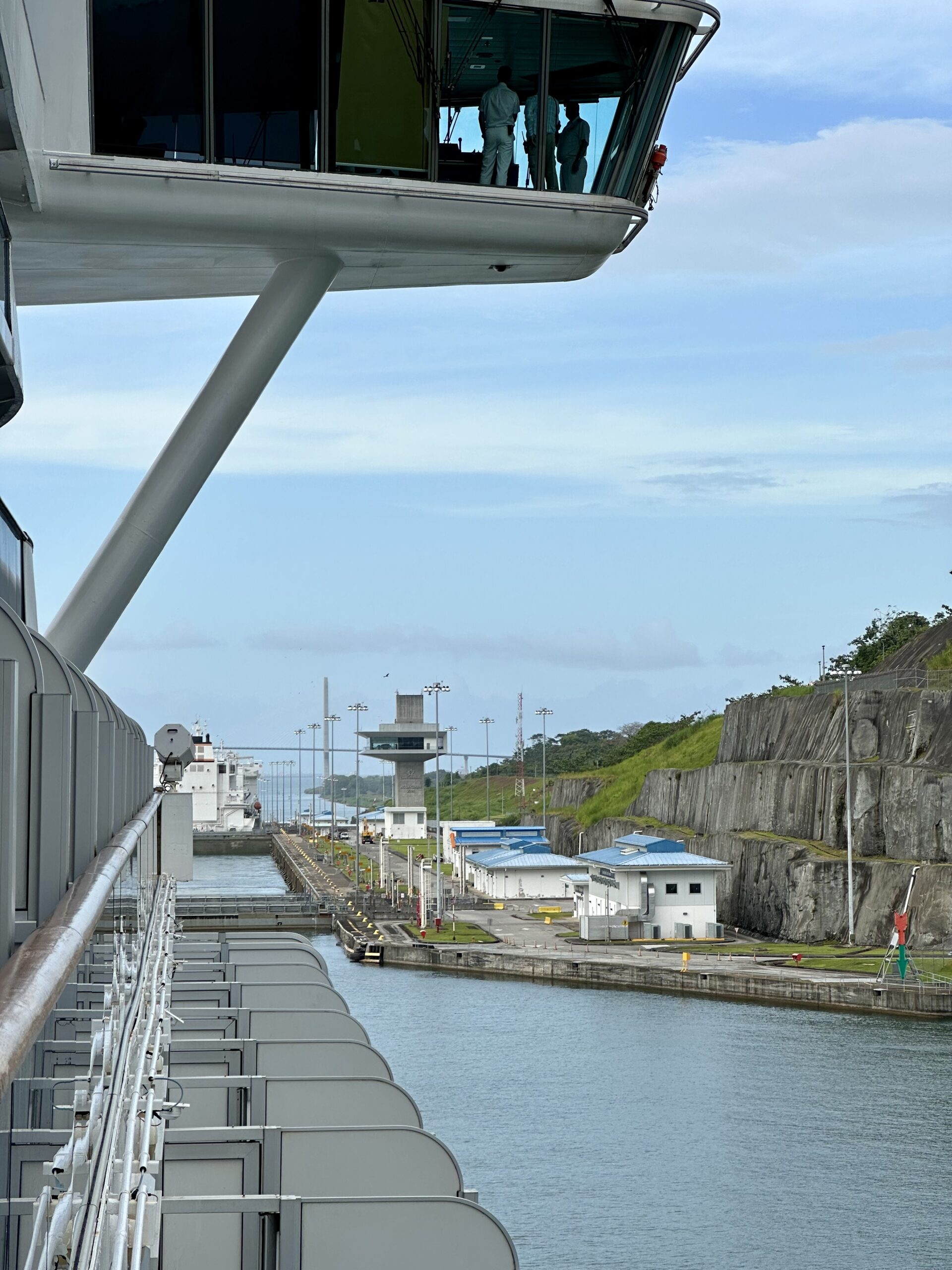
It takes years to become a pilot, and large ships often require 3-4 pilots on board during the transit.
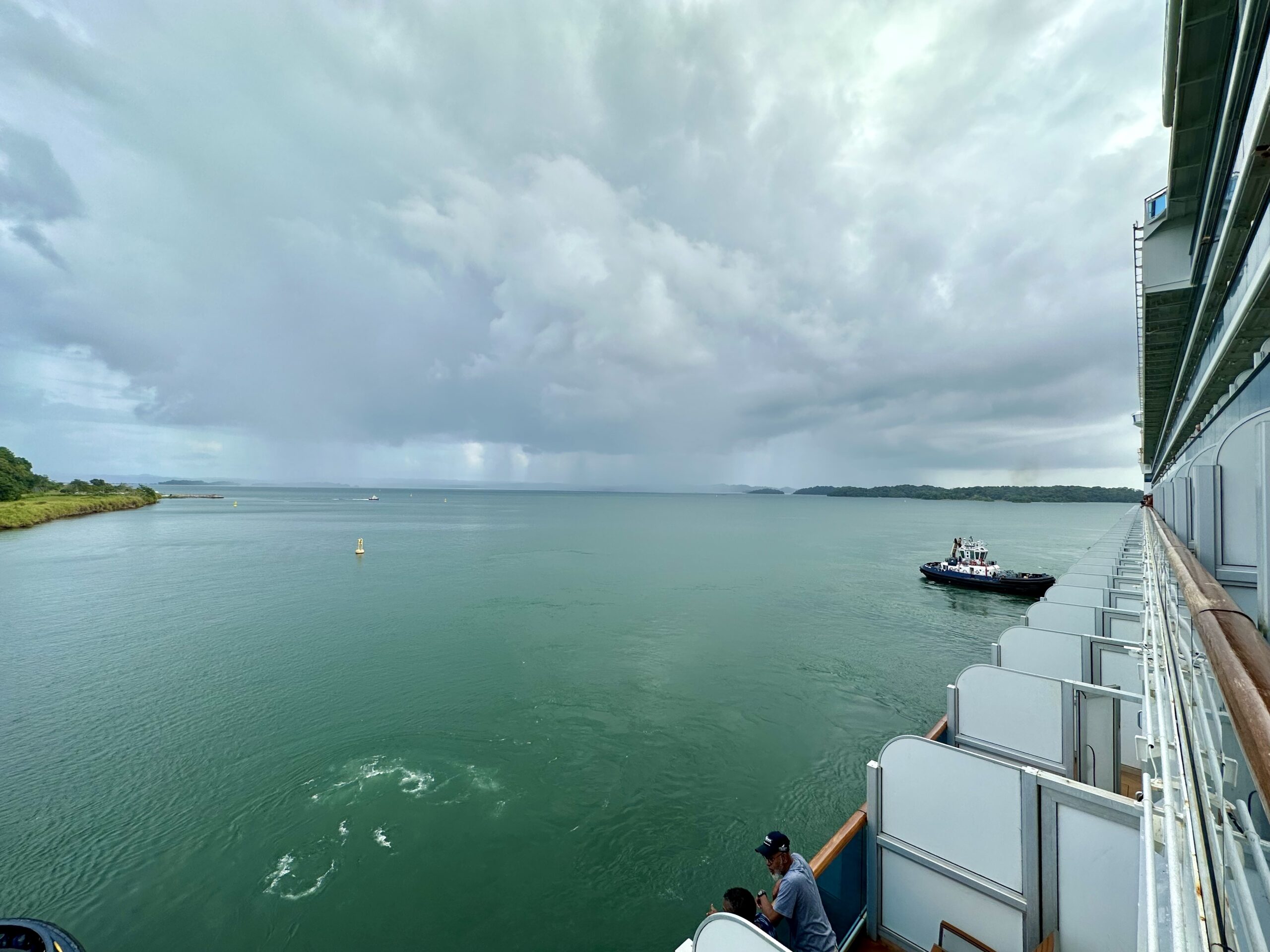
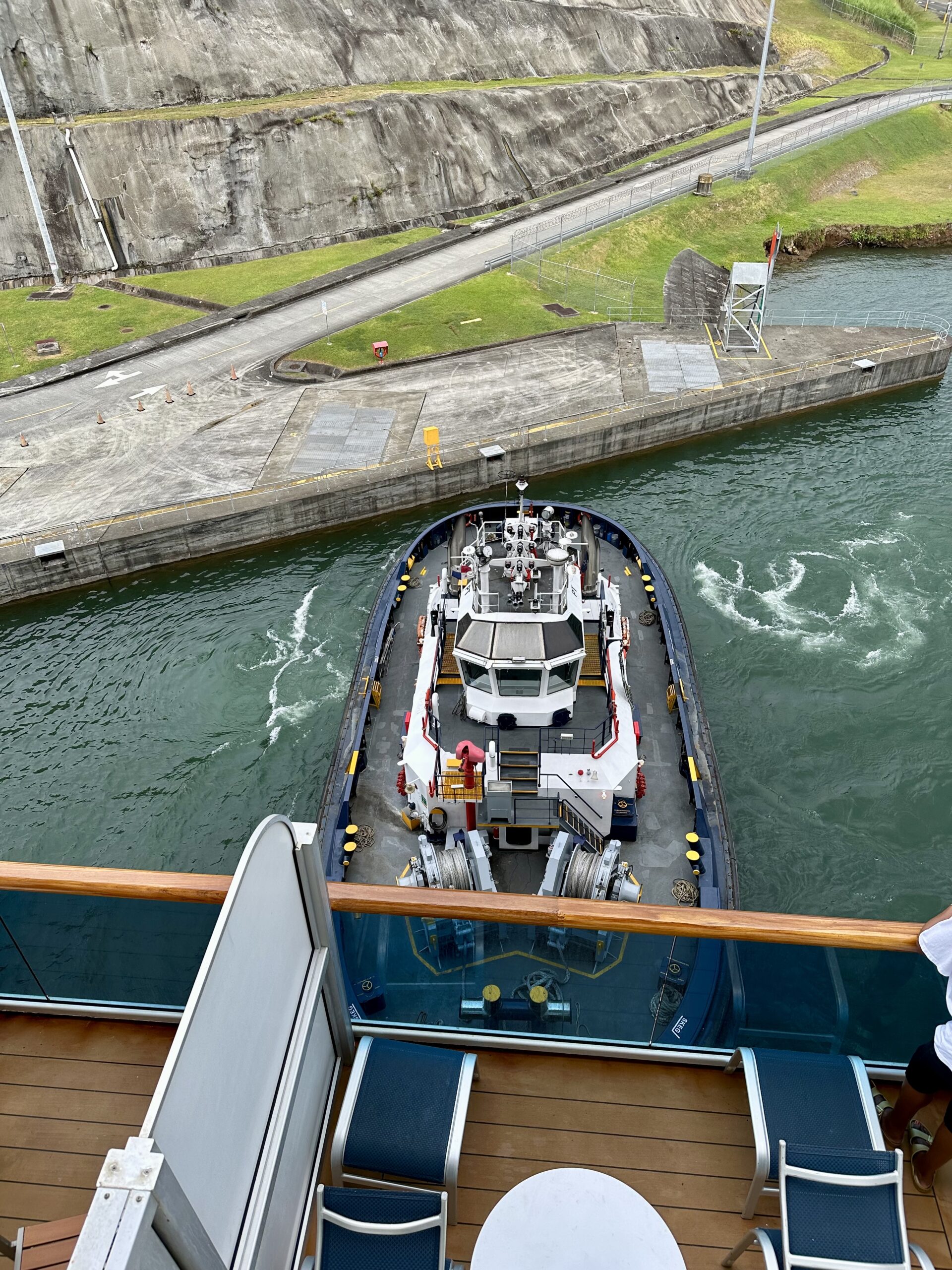
Ships going through the canal are scheduled to transit through in an order determined by the Panama Canal Transit Authority. Some ships are restricted to daylight transit due to their cargos, and U.S. military vessels have priority.
Our ship was supposed to transit back through the locks in the early afternoon. However, a tanker ship was bumped up ahead of us. It was restricted to daylight transit due its cargo.
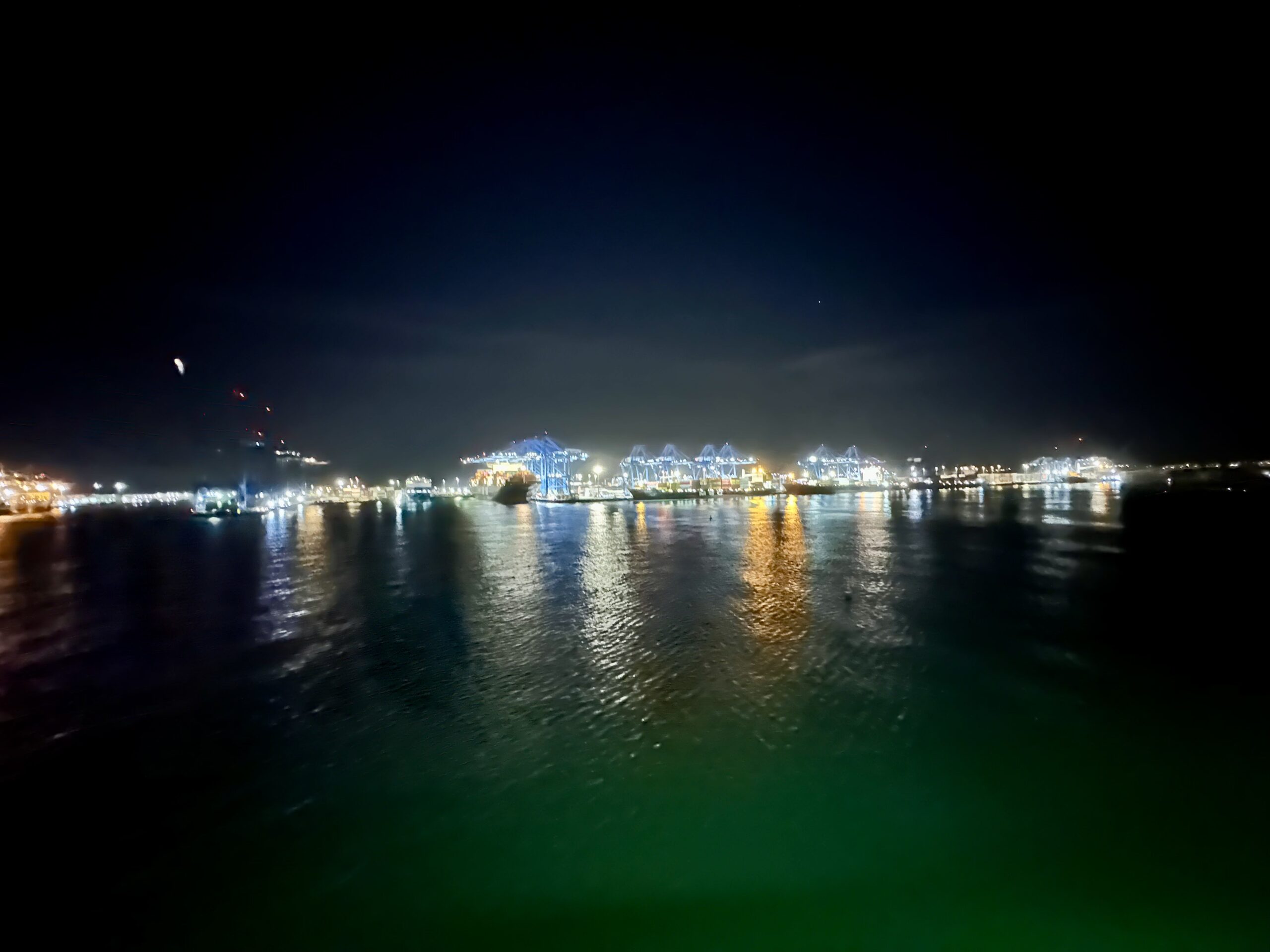
We were over three hours late getting to the port of Colon to pick up all the passengers who had disembarked in Gatun Lake for excursions. However, it was beautiful to see this port lit up at night.
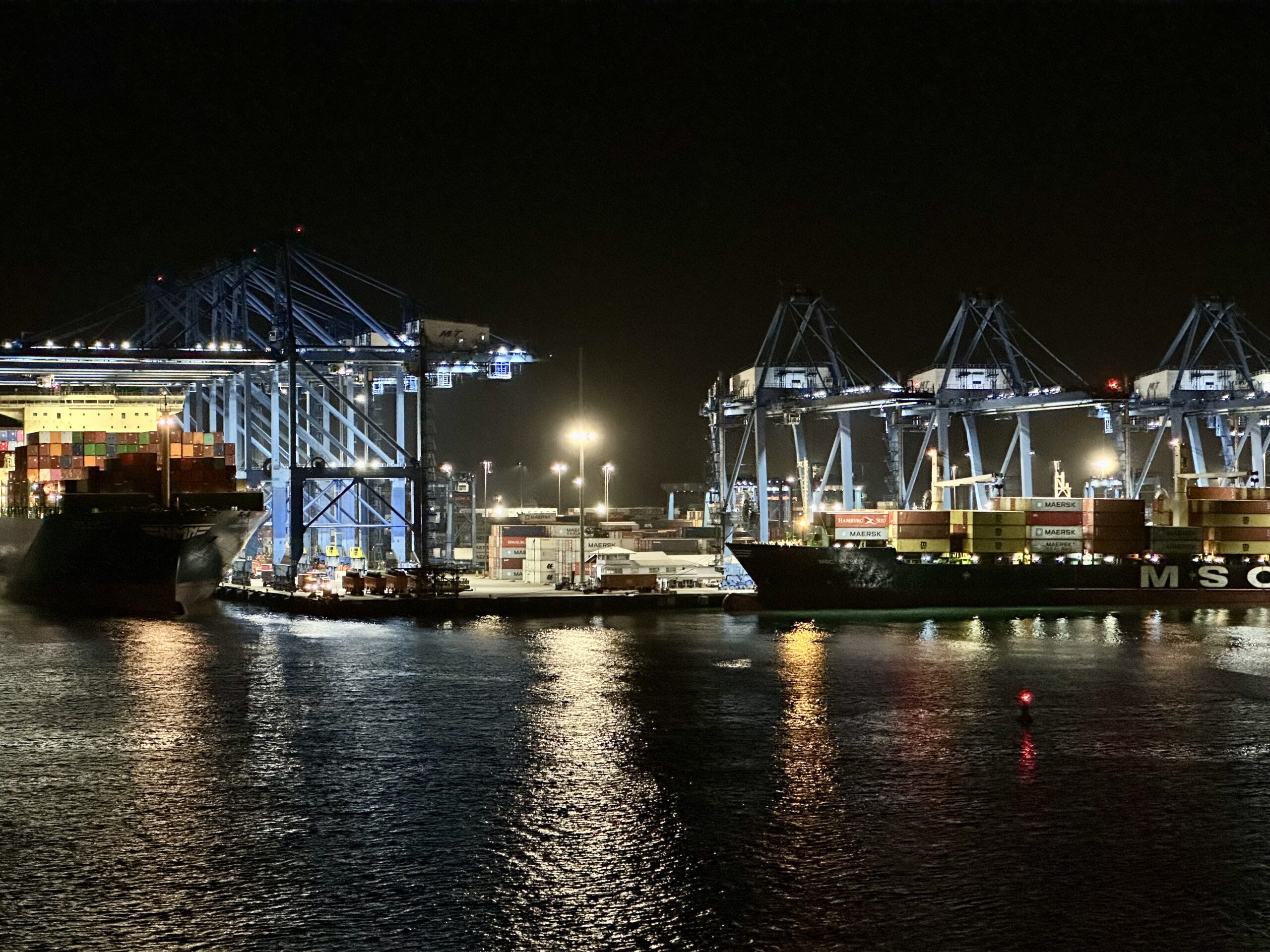
Because so many passengers were off the ship we ended up having dinner in a nearly empty dining room that normally sat about 600 people. The crew were much more relaxed this night and we had a great time joking around with everyone.

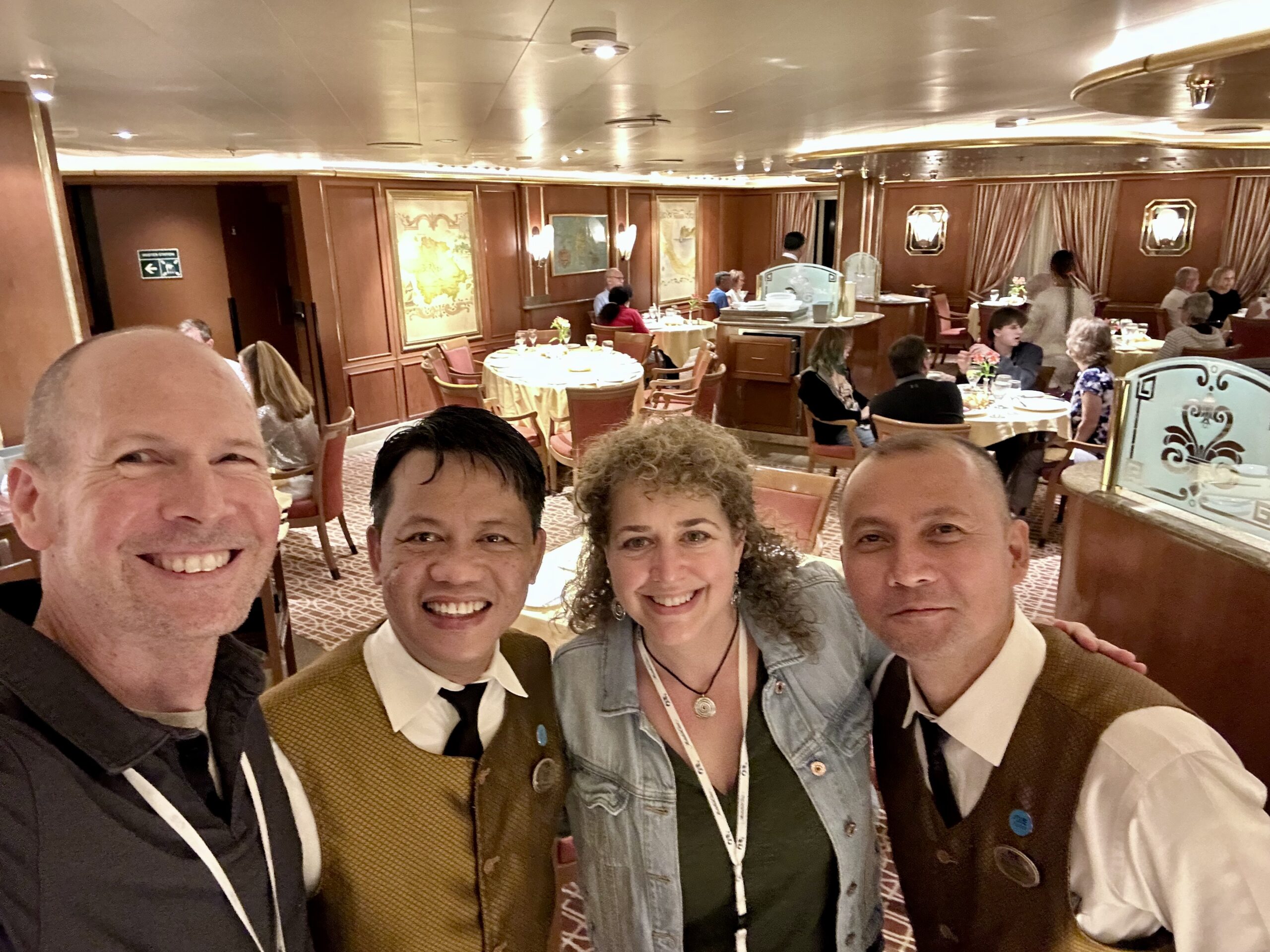
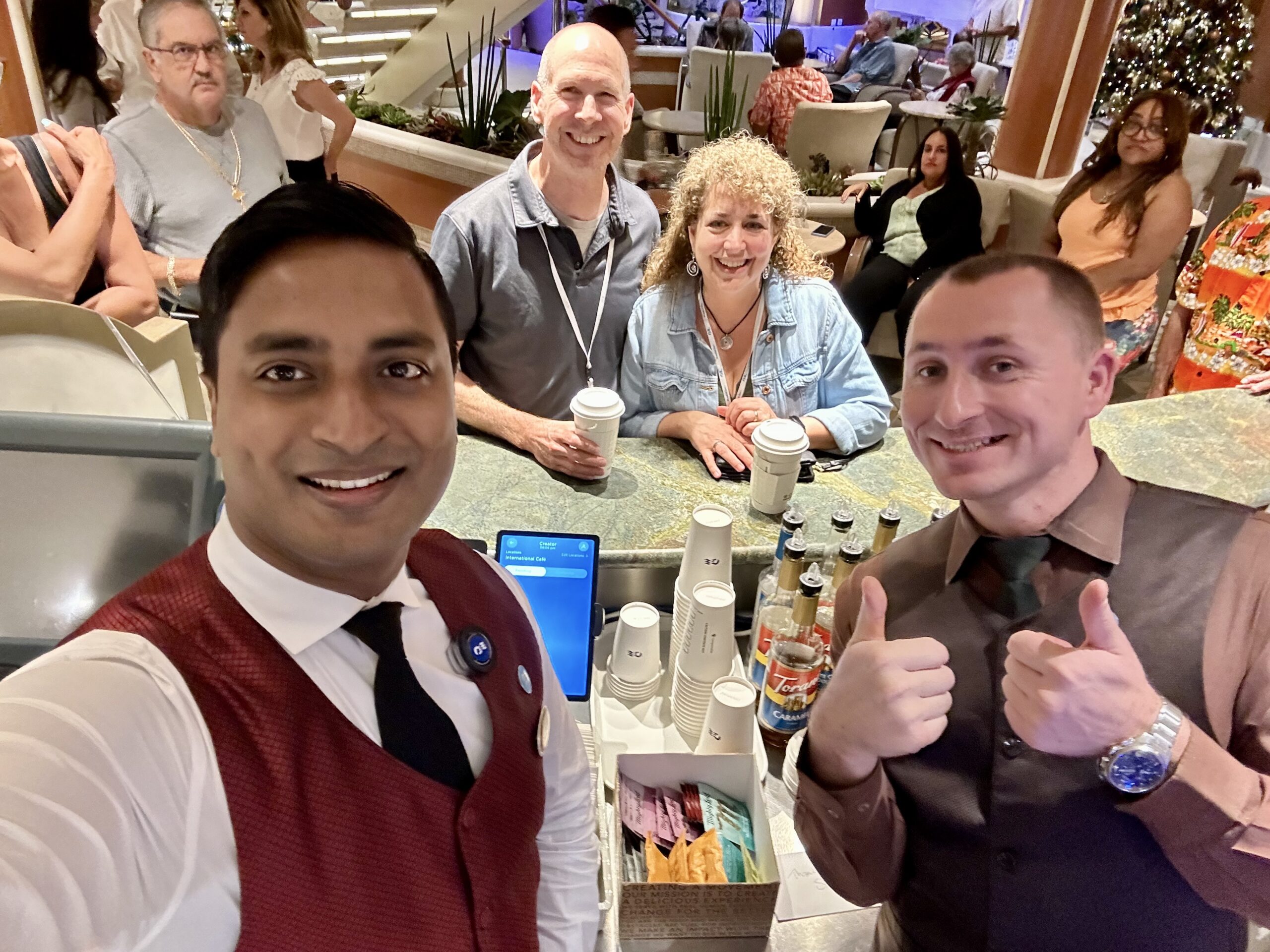
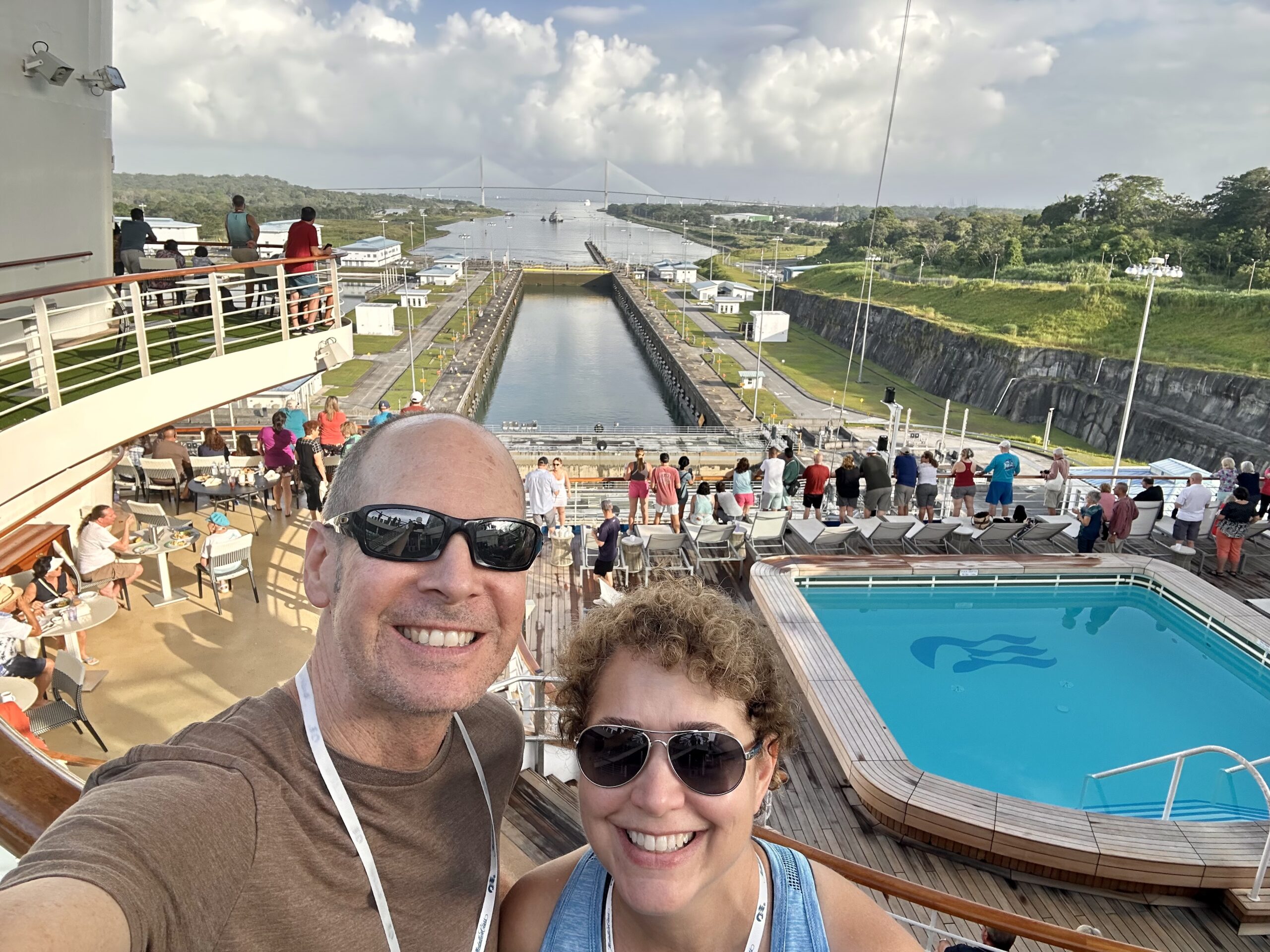
We are really glad we were able to take this cruise. And going through it over New Year’s made it extra special. Happy 2023!
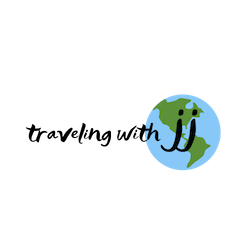

Wow, complete information has been provided about Panama canal. Very useful blog for all travellers. Nice clicks, useful tips, great 👍🙏
Keep travelling
Enjoyed your description. Thanks you for also acknowledging the lives lost by workers who toiled to build the canal.
Hello Lovebirds!
Yes, I can see you really had a wonderful time going through that massive Panama Canal Locks at Gatun Lake and met friendly people like Exel and Reynaldo. You took some great looking pictures. Thank you for sharing! Indeed, it is mind boggling and truly a feat of engineering how they dug through the Continental Divide !!
Hi Joel and Jerilyn,
Thanks for the great write up on the Panama Canal! Isn’t that bridge on the Colon side fantastic! Your dining room looked so posh…butter on ice! I’ll bet the food was terrific. Hope you are having a great spring.
Love it! Thanks for sharing!
This is a great description of the canal and all it’s workings thanks Jeri! The photos are great!
Great picture. Brought back memories of our trip.